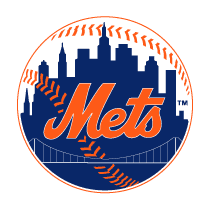Quiz Answer Key and Fun Facts
1. The team came to spring training in 1986 after having finishing in 2nd place in 1985. Manager Davey Johnson made a bold statement during spring training concerning how he thought the 1986 season would go. What did he say?
2. This player made his debut for the Mets in 1983, the same year Johnson took over. After coming to the team in May of that year, he went on to earn Rookie of the Year honors. Who was this?
3. This pitcher was acquired in a 1982 trade and went on to become a vital cog on the team in 1986. What pitcher was this?
4. During the offseason between 1983 and 1984, the Mets acquired another pitcher that would be vital to the team for many years, including the 1986 championship year. Who was this big guy?
5. The "glue" of the team, this player was acquired by the Mets during the 1983 season, and played for the next seven years for them. Who was this "glue"?
6. This player came to the Mets in 1984 and was an instant sensation. He was unsurpassed as a pitcher during his early years as a Met. Who was this?
7. This player who the Mets aquired in 1984 for that infamous "player to named later", played a vital role in the Mets 1986 season and postseason. Name him.
8. The Mets brought this player over from the American League after the 1984 season. He flashed his potential on and off during the next few seasons including the 1986 season, but flourished later. Who was this powerhouse?
9. The Mets pulled off a blockbuster deal during the winter of 1985 to acquire this veteran player who was considered to be one of the best at his positon at the time. Who was this?
10. In a deal that seemed insignificant at the time, but turned out to be very important, the Mets acquired a starting pitcher from the American League before the start of the 1986 season. Who was this?
11. In an interesting twist, this former Mets player returned to the team in 1986, and was part of the 1986 Championship. Who was it?
12. Did the Mets really dominate as Manager Davey Johnson said they would in 1986? What was their season record?
13. The foes for the 1986 Mets in their postseason were the Houston Astros who had won 96 games during the regular season. Their star pitchers were Mike Scott and Nolan Ryan. What was odd about this?
14. The 1986 NLCS went six games with the Mets winning the series four games to two. What pitcher was credited with the most wins in the series?
15. There were two memorable games in the NL Championship Series for Mets fans. In game three, who hit a walk-off home run for the Mets in the bottom of the ninth inning to win the game for the Mets?
16. In what some historians and fans called one of the greatest baseball games ever, the 1986 Mets won the NLCS and earned the right to go to the World Series by winning game six in a 16-inning marathon. Who hit the 14th inning home run that prolonged the game for Houston?
17. The 1986 Mets' World Series was against the Boston Red Sox. The Mets started at home and incredibly, lost the first two games of the series at Shea Stadium. The fans were obviously concerned as the series shifted to Boston. Who hit the home run in Game 3 that started the Mets on their comeback in the series?
18. In what has become possibly the most famous World Series game of all-time, the Mets incredible Game Six victory stands out. Mookie Wilson, Bill Buckner and "The Play" are etched in fan's memories for all-time. Who thought that he had won the game and the series for the Red Sox with a 10th inning home run in that game, allowing the Red Sox to take the lead?
19. The first two Mets batters in the 10th inning of game six in the 1986 World Series were retired by Red Sox pitcher and former Met Calvin Schiraldi. However consecutive singles by Gary Carter, Kevin Mitchell, and Ray Knight scored one run for the Mets. Then it was Mookie Wilson's turn to bat. We know how the game ended, but how did the tying run score?
20. Game 7 of the 1986 World Series saw the Mets ultimately prevail and win. Who was the Mets player that was named World Series Most Valuable Player?
Source: Author
fredsixties
This quiz was reviewed by FunTrivia editor
Nightmare before going online.
Any errors found in FunTrivia content are routinely corrected through our feedback system.

